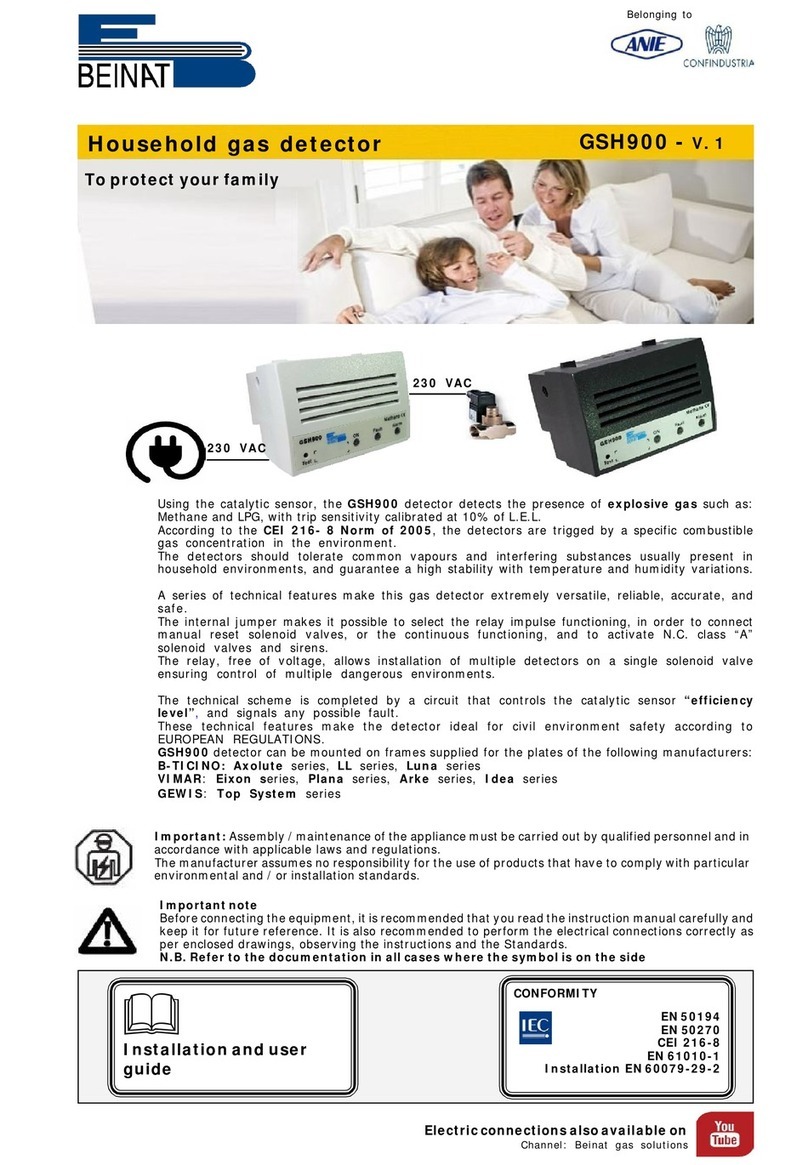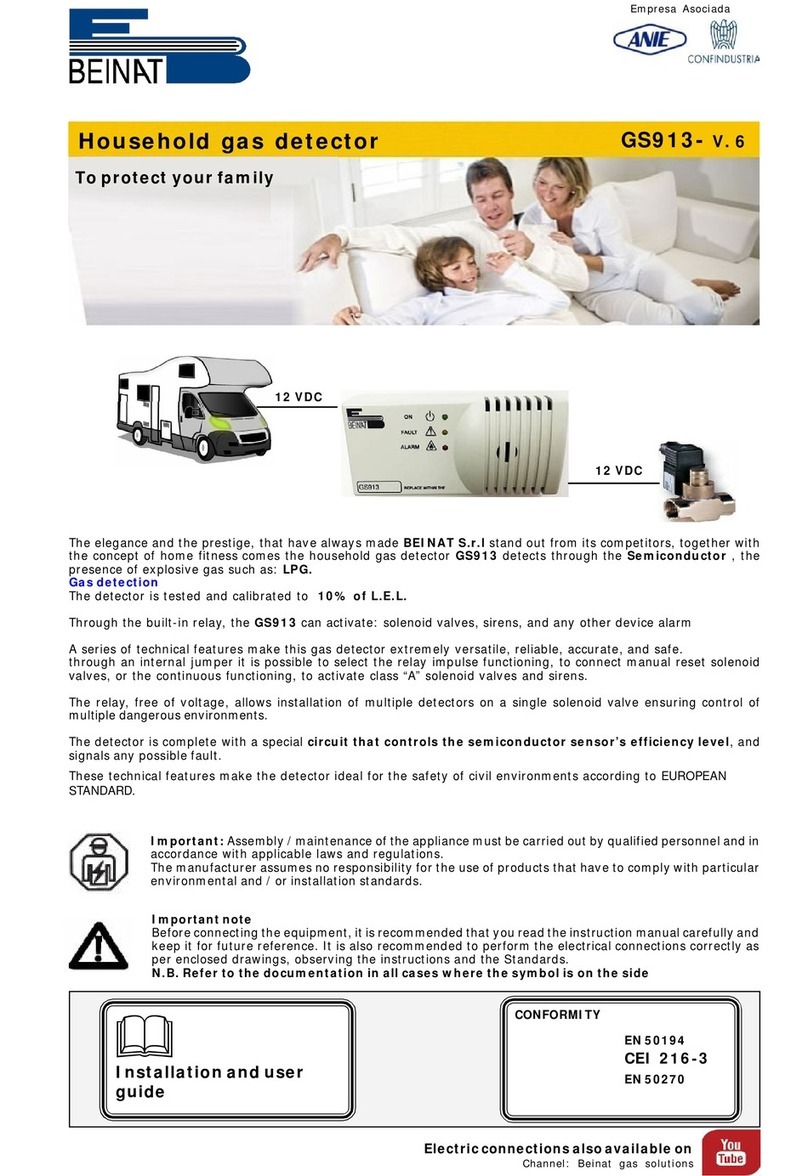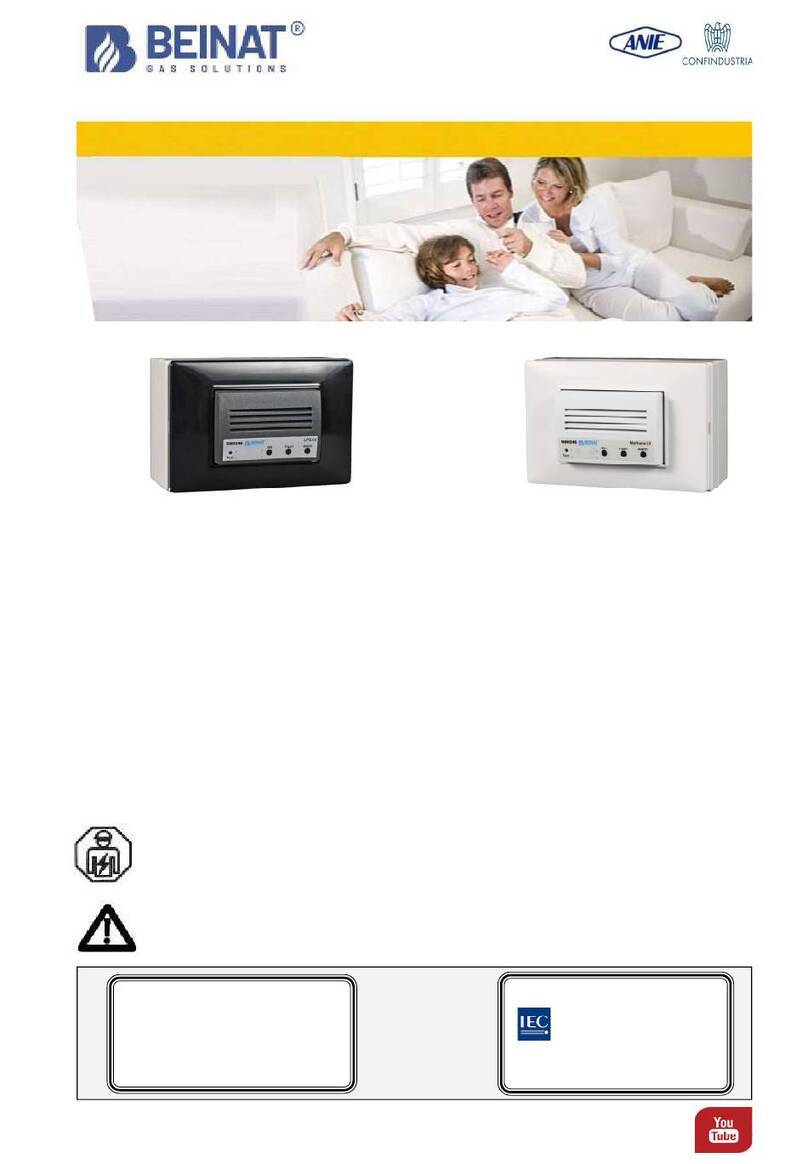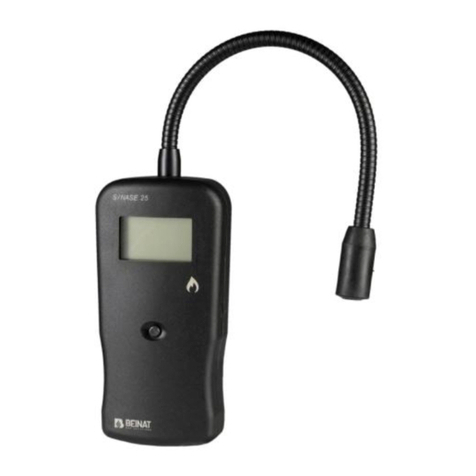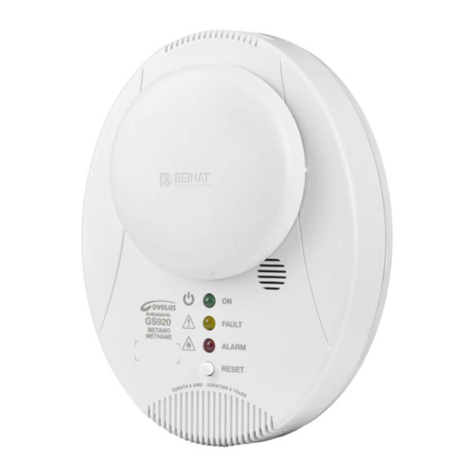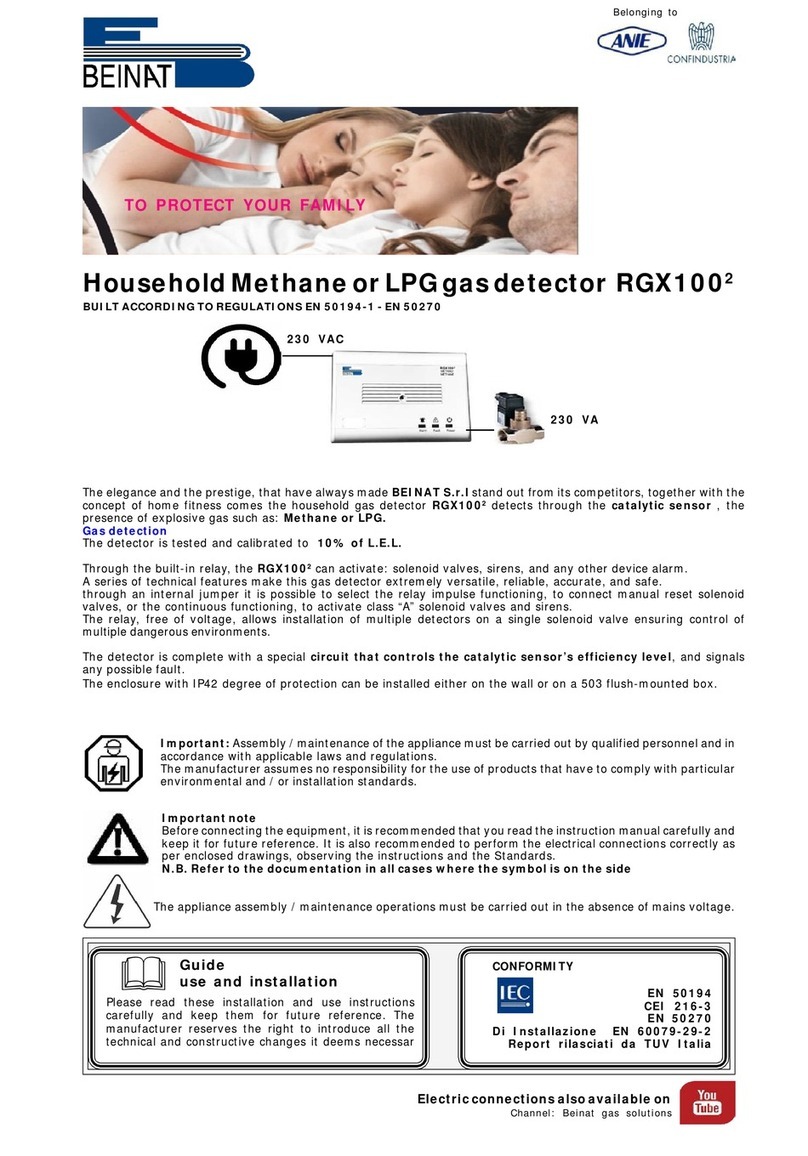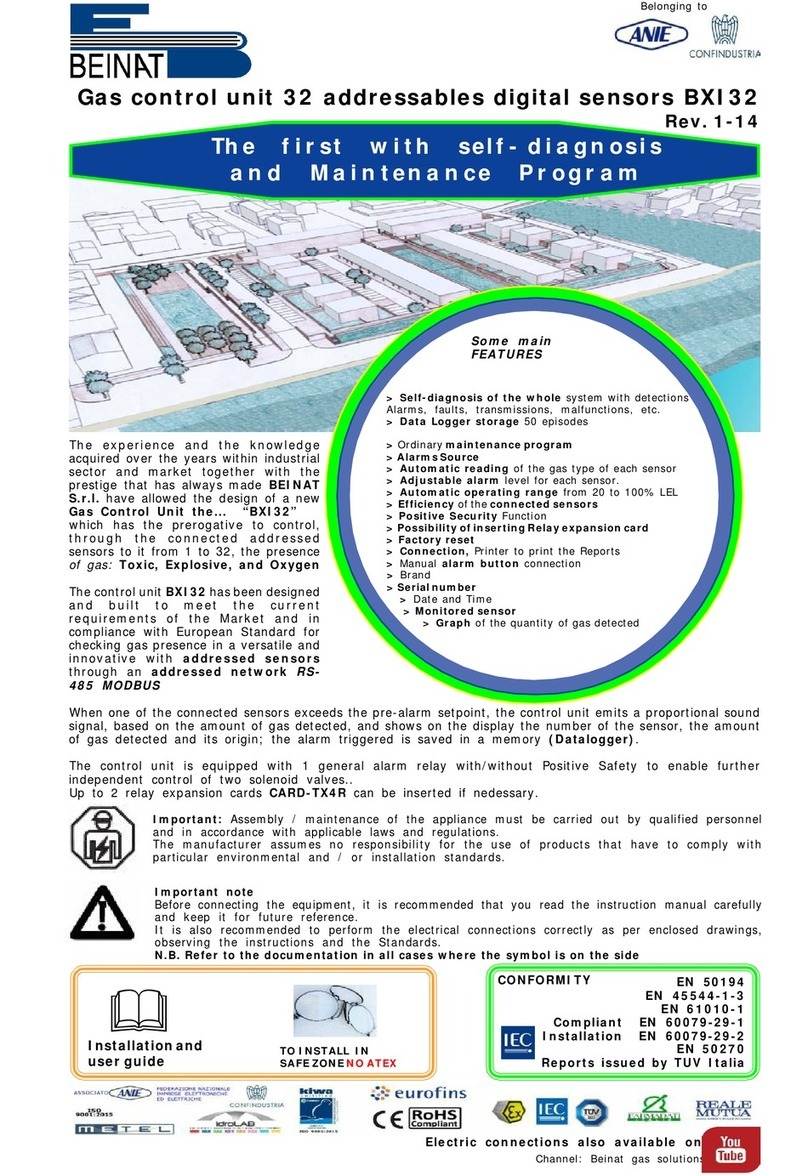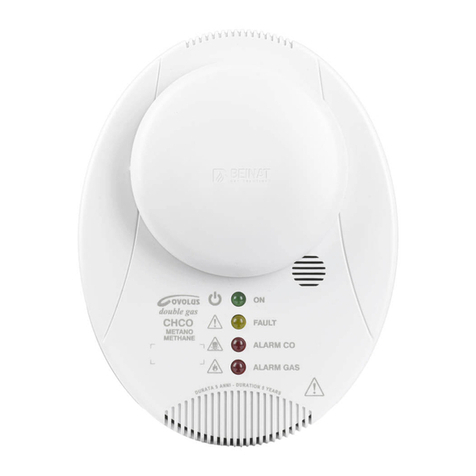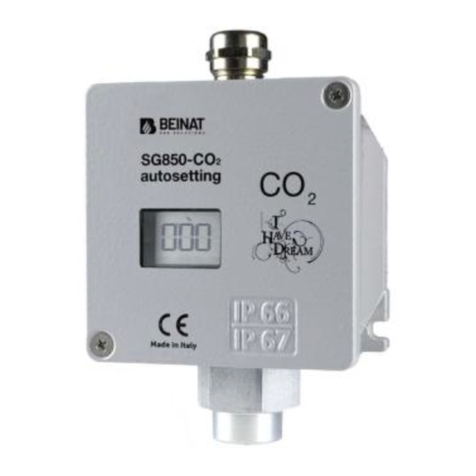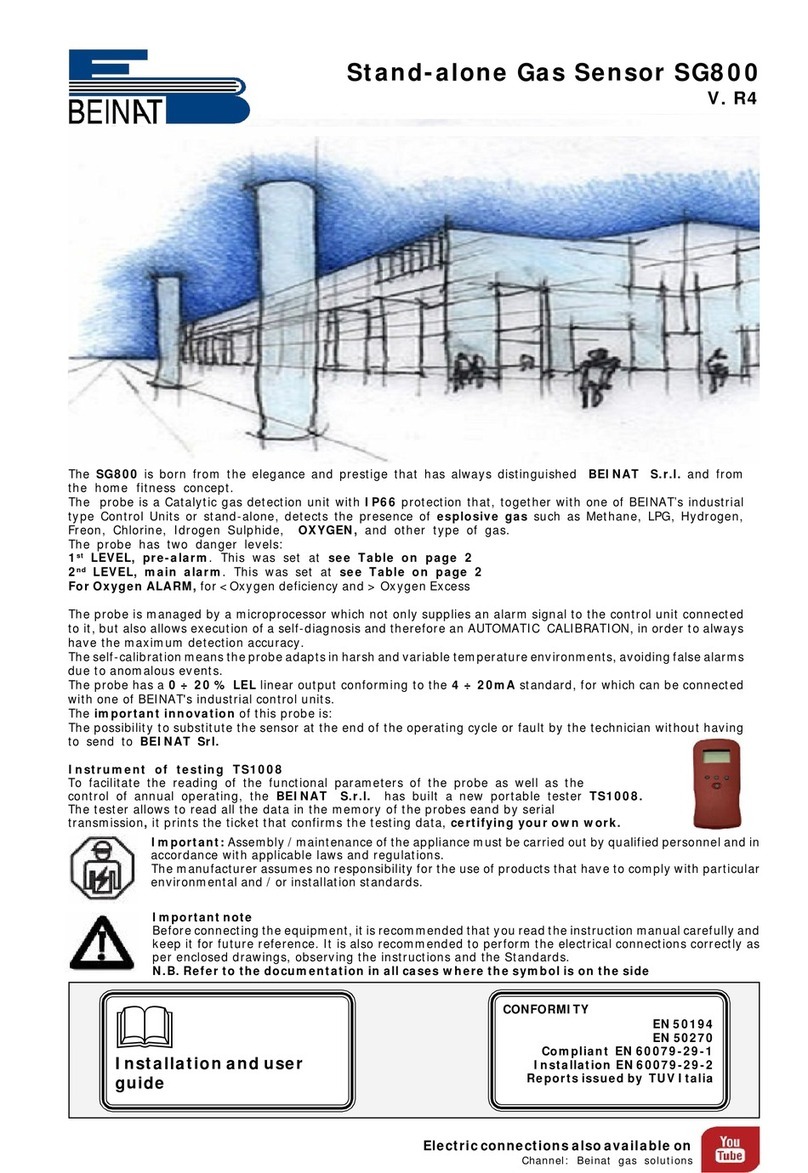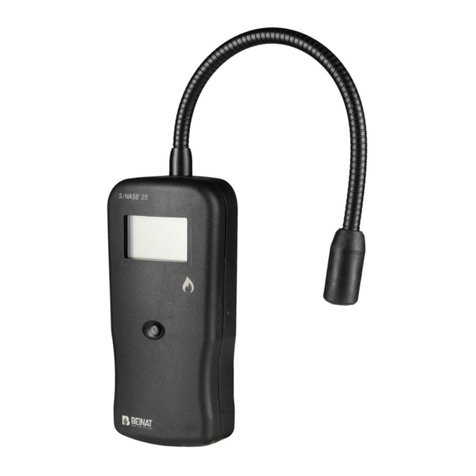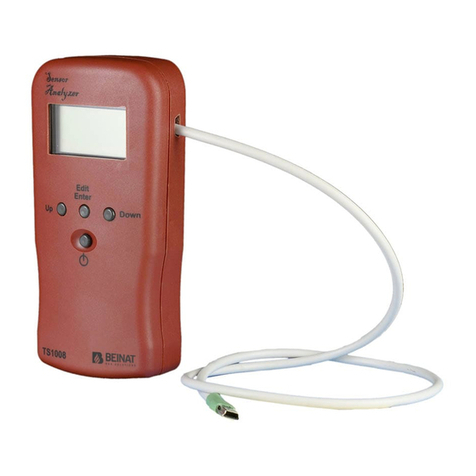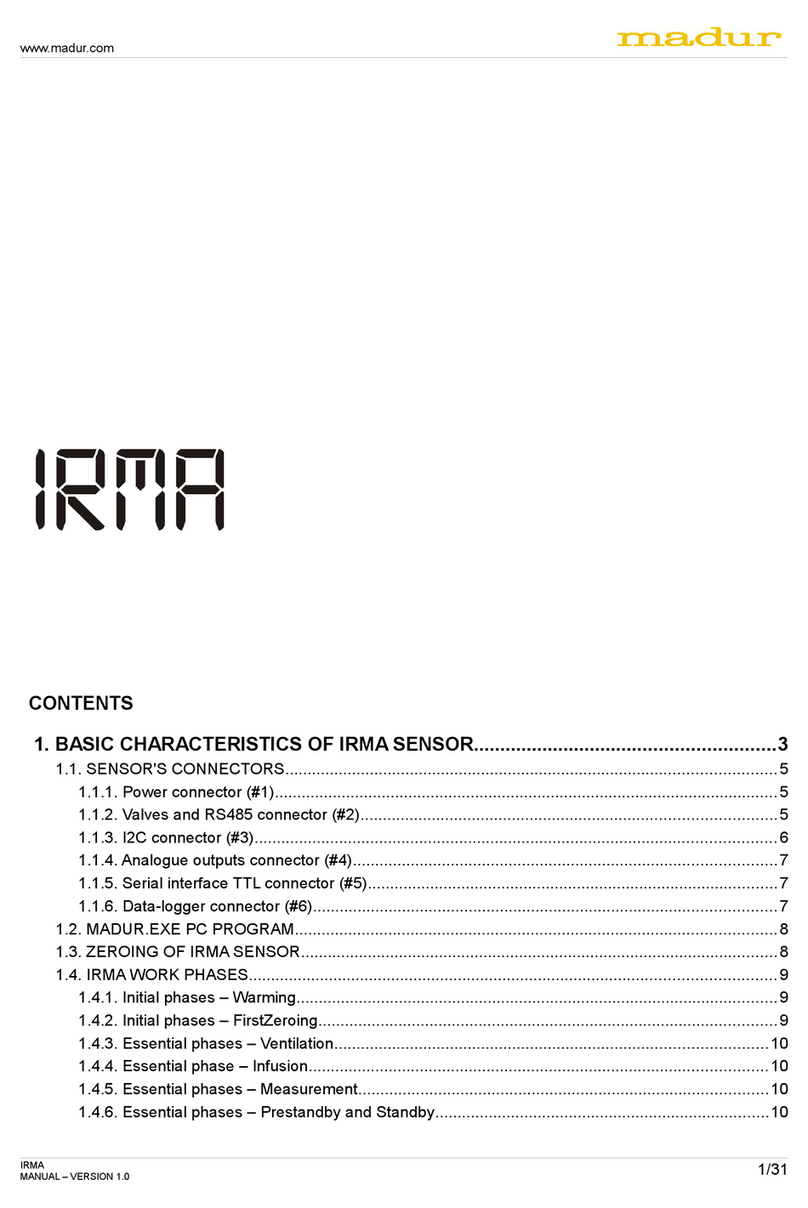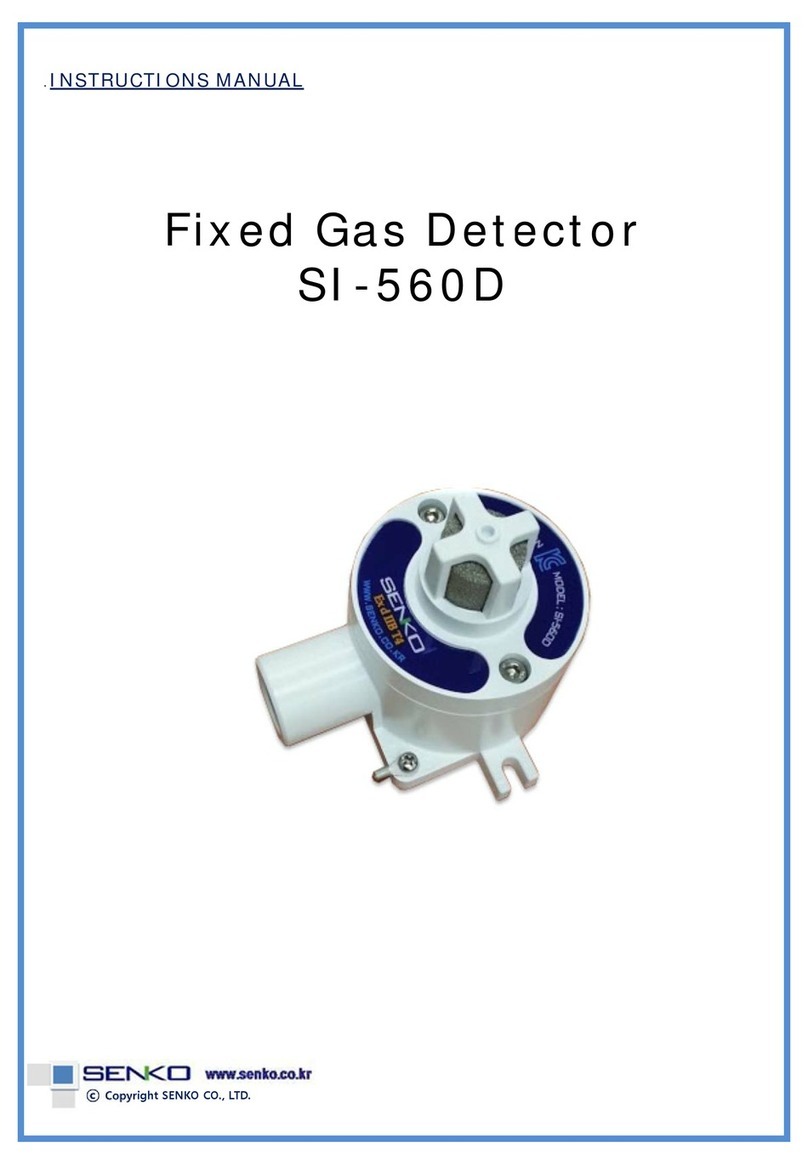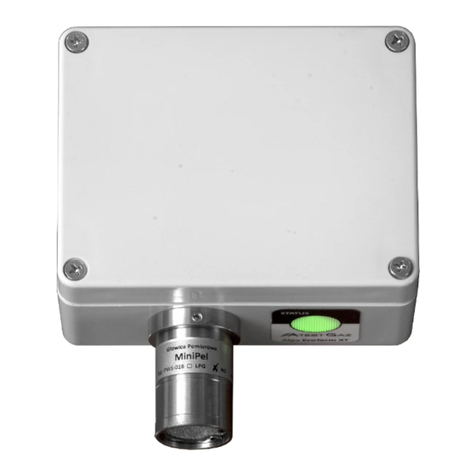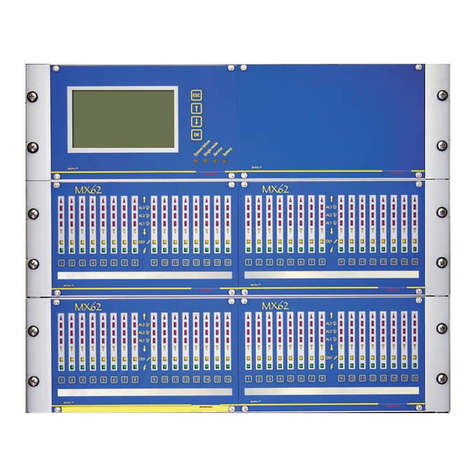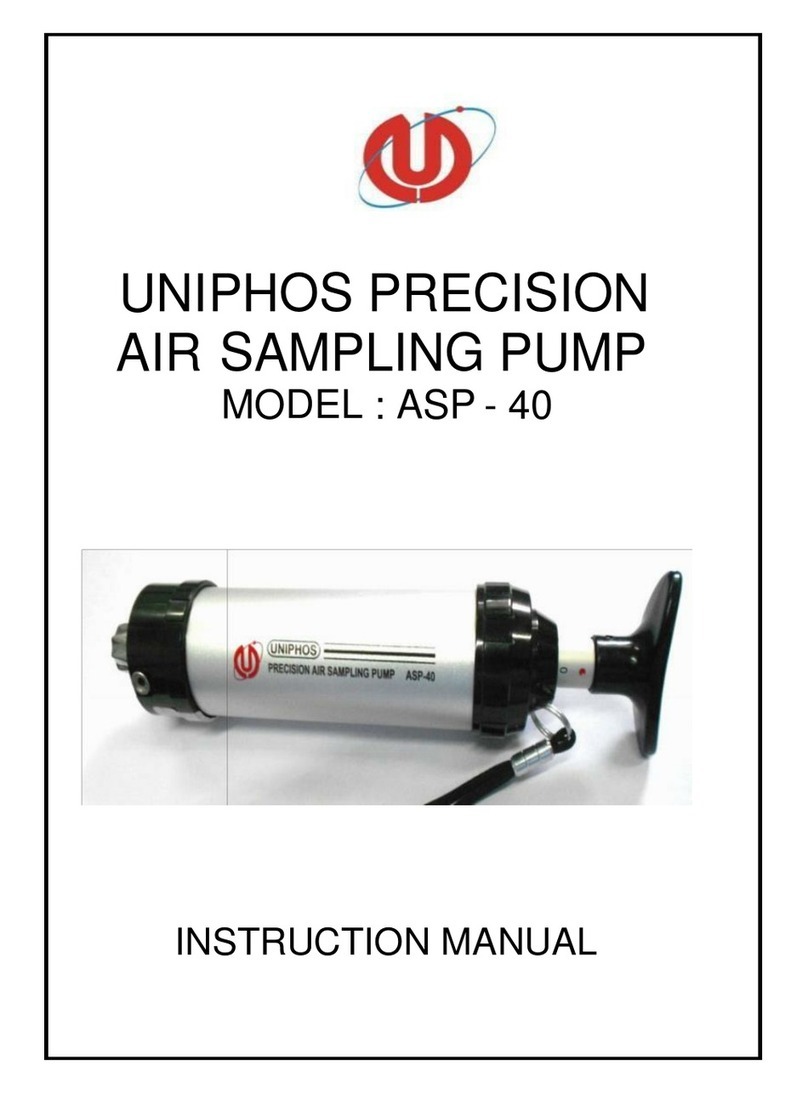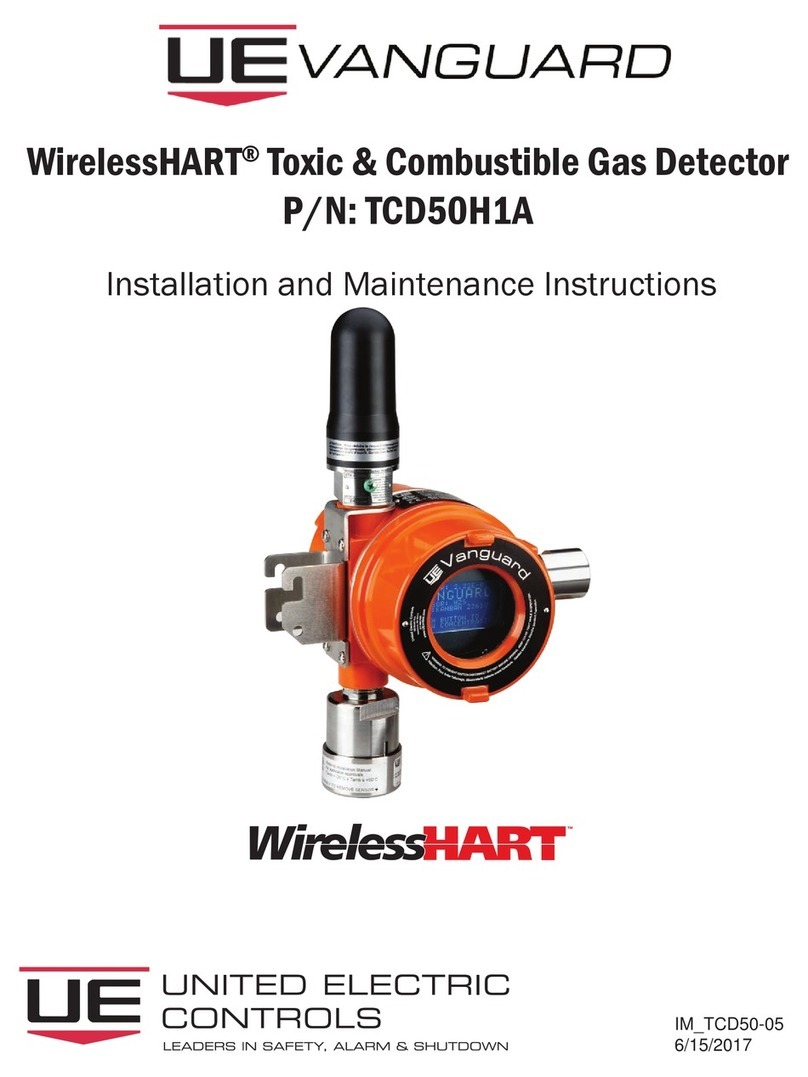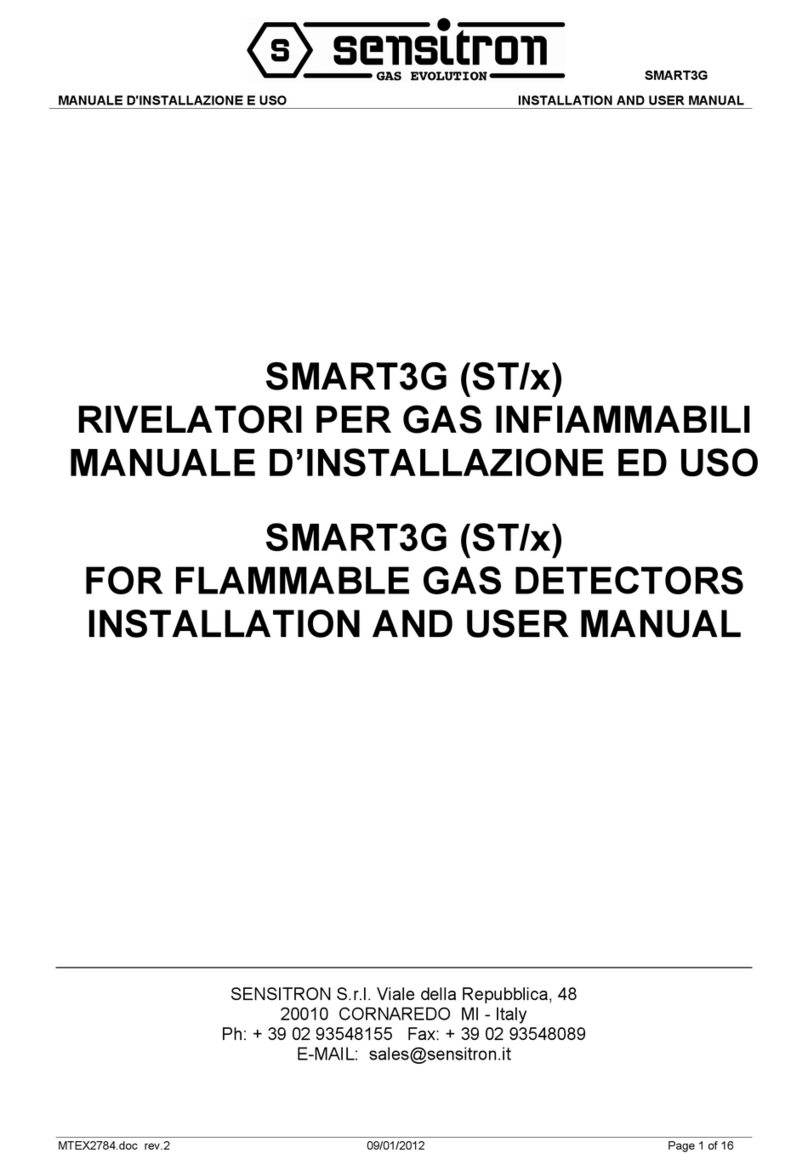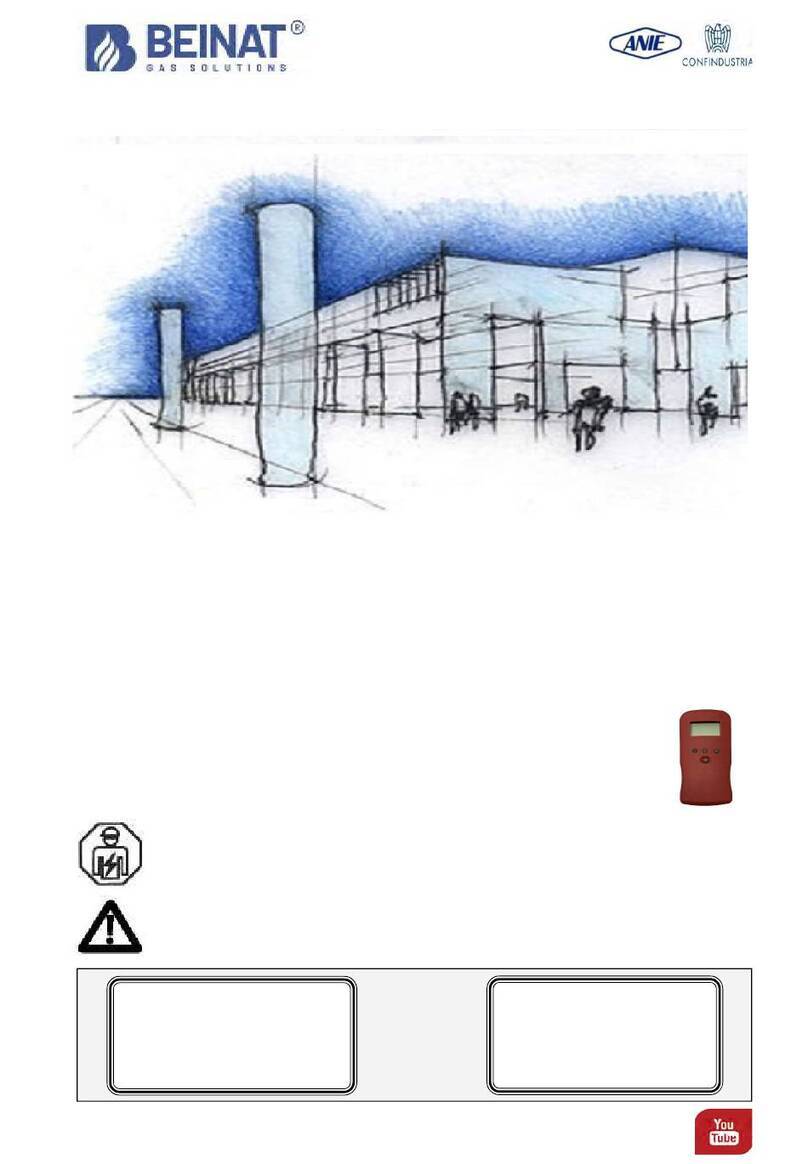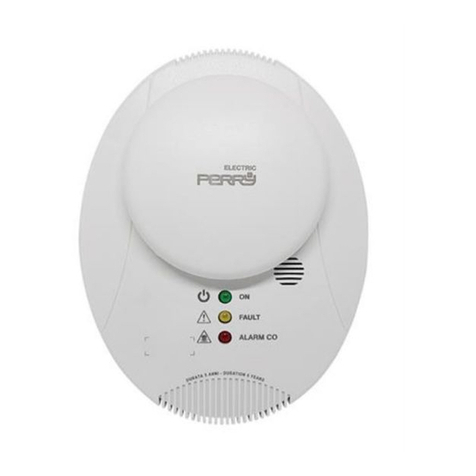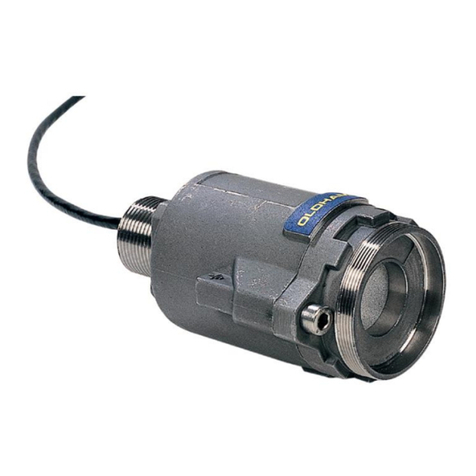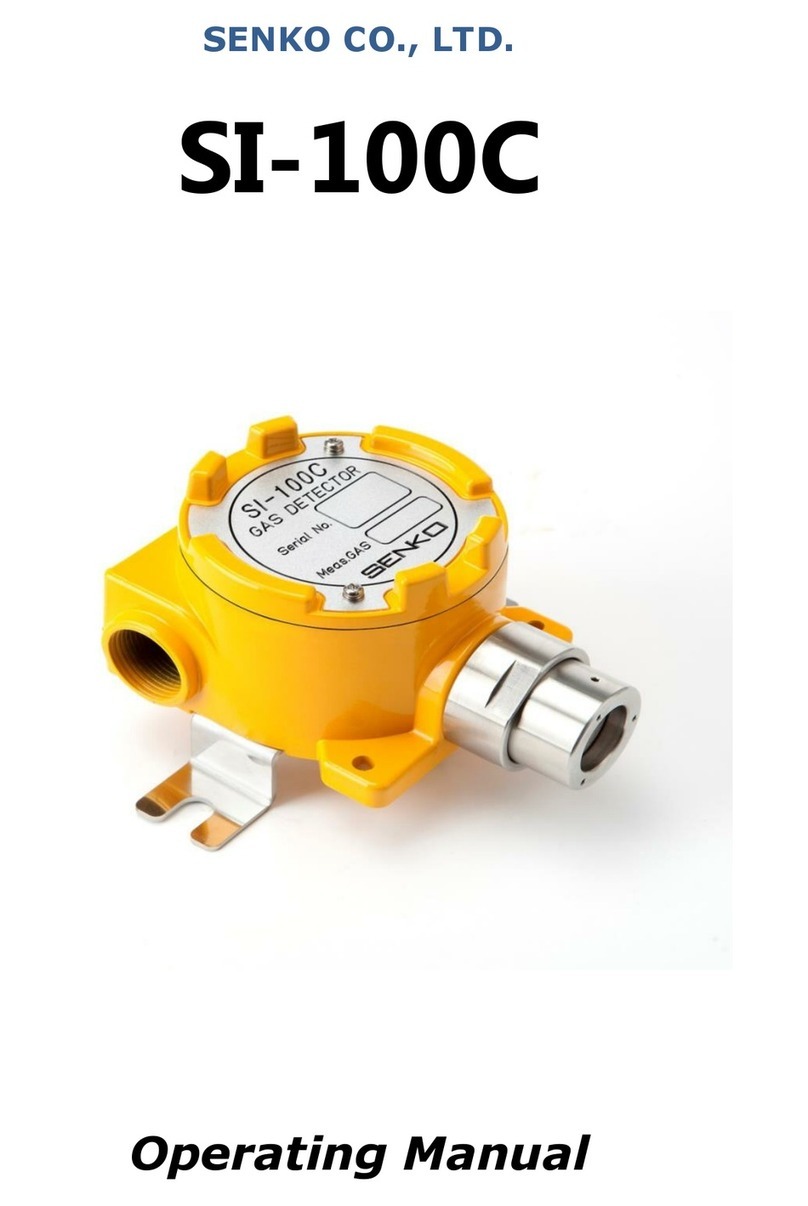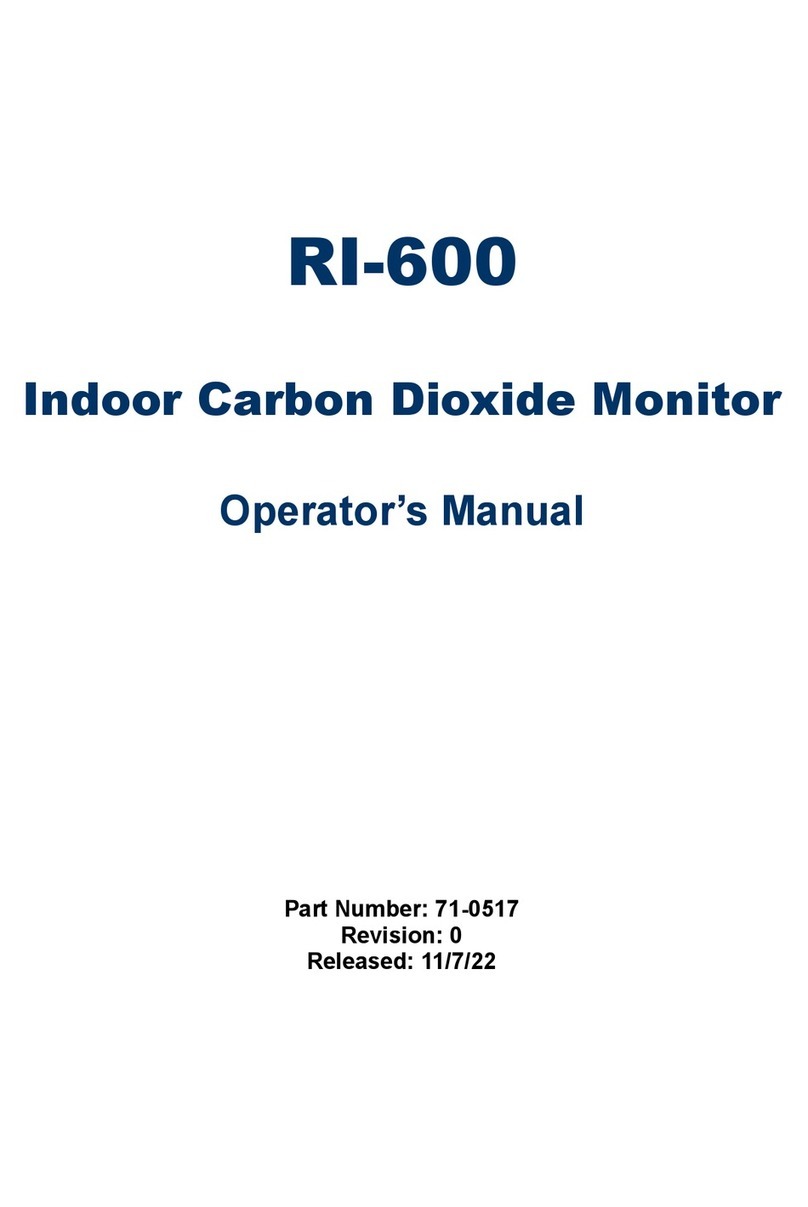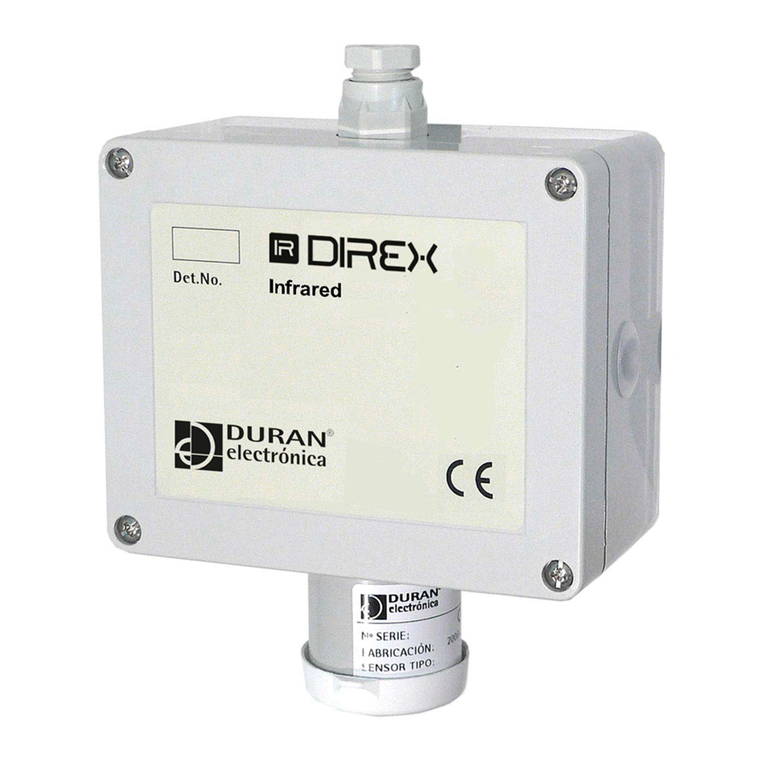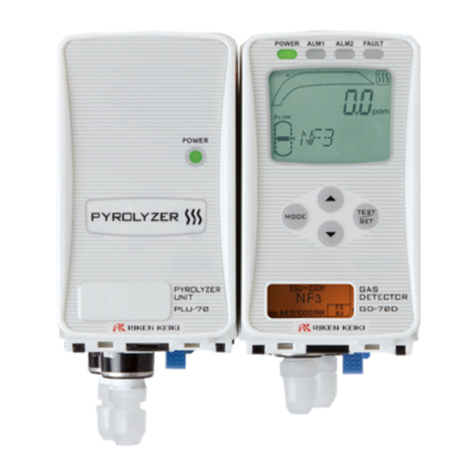
Pagina 2
Page2
Precauzioni Precautions
Caratteristiche Tecniche Technical Specifications
ASSICURARSI dell' integrità del rilevatore dopo
averlo tolto dalla confezione.
Verificare che i dati scritti sulla scatola siano corrispon-
denti al tipo di gas usato.
Quando si effettua il collegamento elettrico seguire
attentamente il disegno.
Ogni uso diverso da quello per cui il rilevatore è stato
progettato è da considerarsi improprio, per cui la
FERRARI S.r.l. declina ogni responsabilità per
eventuali danni causati a persone, animali o cose.
IMPORTANTE: la prova di funzionamento non va
effettuata con il rubinetto del gas poiché questo non
garantisce una sufficiente concentrazione per attiva-
re l'allarme generale.
TERMINI e AFFIDAMENTI: l'installazione del
rilevatore, la sua manutenzione ordinaria e straor-
dinaria, una volta all’anno, e la messa fuori servizio
allo scadere del periodo di funzionamento, garantito
dal costruttore devono essere eseguiti da persona-
le autorizzato o specializzato.
Per servirvi a lungo e con soddisfazione del vostro
Rilevatore di gas CHCO, utilizzatelo tenendo presente le
precauzioni che seguono.
Non bagnatelo.
Il rilevatore non è impermeabile. Se immerso in acqua o
esposto ad alti tassi di umidità può riportare seri danni.
Non lasciatelo cadere.
Forti colpi o cadute durante il trasporto o l‘installazione
possono danneggiare l’apparecchio.
Evitate i bruschi sbalzi di temperatura.
Variazioniimprovviseditemperaturapossonoprovocarela
formazione di condensa e il rilevatore potrebbe non
funzionare bene.
Pulizia
Non pulire mai l'apparecchio con prodotti chimici.
Se necessario lavare con un panno umido.
Evitate assolutamente di avvicinare panni inbevuti con
diluenti, alcool e detersivi chimici
CHECK the integrity of the unit after having removed
it from the box.
Check that the data written on the box correspond to the
type of gas used.
When doing the electrical connections, follow the drawing
closely.
Any use of the detector for purposes other than the
intended one is considered improper, and as a result
of which FERRARI S.r.l. therefore disclaims any
responsibility for possible damages caused to people,
animals or objects.
IMPORTANT: Do not test the device using the gas tap
as this does not necessarily provide sufficient
concentration to activate the main alarm.
TERMS and EXPECTATIONS: The installation of the
gas detector, its ordinary and extraordinary
maintenance, every six months, and its out of service
removal at the end of the functional life guaranteed by
the manufacturer, must be carried out by authorized
or specialized personnel.
In order to achieve long and satisfactory use of your
gas detector, CHCO use it by respecting the following
precautions.
Do not allow it to become wet.
The control unit can be seriously damaged as it is not
waterproof either when immersed in water or exposed
to high levels of humidity.
Do not drop it.
Heavy knocks or falls during transportation or
installation can damage the appliance.
Avoid abrupt temperature fluctuations.
Sudden temperature variations can cause condensation
and the detector could work poorly.
Above about +40°C, the detector could become very
sensitive, and generate false alarms.
Avoid abrupt temperature fluctuations.
Sudden temperature variations can cause condensation
and the probe could work poorly.
Cleaning
Never clean the device with chemical products. If
necessary, wash with a moist cloth.
Alimentazione .................. 230Vac +/- 10% 50/60 Hz.
Consumo ................................................... 3,1W
Relè di allarme in deviazione ....... 10A 250VAC Res.
Sensore di Rilevazione ......................... Catalitico
Sensibilità di Allarme ...................al 10% del L.I.E.
Sensore per Gas Tossico CO......... Cella Elettrochimica
Soglia di allarme del rilevatore Gas CO, da 30 a 300 ppm
Precisione dell’apparecchiatura ...................... 1% FS
Guasti al Sensore rilevati dal circuito di Avaria ......
interruzione, corto circuito o decadenza
Durata fase di Test .............................. 60 secondi
Segnalazioni di Allarme .................... Led e Buzzer
Selezione modo di lavoro Relè ....... tramite Jumper
Pulsanti di Test ............................... incorporato
Comando Elettrovalvola ........ classe A o classe B
Temperatura di funzionamento - da - 10 a +40 °C
Umidità di funzionamento .. inferiore al 90 % U.R.
Compatibilità Elettromagnetica ............ EN 50270
Grado di protezione esterno ....................... IP42
Power supply ....................230VAC +/- 10% 50/60 Hz
Power consumption ....................................... 3,1 W
Range of relays contact switching ...... 10A 250V Res.
Explosive gas sensor ................................ Catalytic
Explosion Alarm Threshold ............... At 10% of L.E.L.
CO toxic gas sensor .................. Electrochemical Cell
CO detector alarm sensitivity .................. 30÷300ppm
Device Accuracy ....................................... 1% FS
Sensor’s faults detected by ,Fault Circuit Interruption,
short circuit, or wear
Test Phase Duration .............................. 60 seconds
Signal Alarm by ............................... LED and Buzzer
Working mode the main alarm relay............ Integraded
Test Button ........................................ Integraded
Mounting ................................. External wall mount
Functioning Temperature ................. -10°C to +40°C
Functioning Humidity ............................... 0÷90% RH
Electromagnetic Compatibility .................. EN 50270
External degree of protection ........................... IP42
Caratteristiche Funzionali Dei Sensori Gas
Il sensore a tecnologia CELLA ELETTROCHIMICA ha una durata di:
5 anni.
Il sensore a tecnologia CATALITICA ha una durata che può variare
da: 5 a 6 anni.
La temperatura di lavoro da –10°C a + 40°C.
ATTENZIONE !
La sonda CATALITICA non sopporta un rilevamento oltre il 100%
del L.I.E. , pena la morte naturale del sensore. Ogni sbuffata
istantanea di gas oltre il 100% del L.I.E. toglie mesi di vita al
sensore.
Per provare il gas Tossico emettere del gas da una bomboletta
precalibrata da 30 a 300 ppm, nelle vicinanze del sensore grigio,
vedi punto 5.
N.B. Usando altri tipi di gas non si attiva l’allarme, ma si guasta
il sensore.
La prova del rilevatore va eseguita simulando la presenza di gas
emettendolo da una bomboletta precalibrata, una per ogni tipo,
Esplosivo o CO.
Operating specifications of the gas sensors
The ELECTROCHEMICAL CELL technology sensor has a duration of:
5 years.
The CATALYTIC technology sensor has a duration that can vary:
from 5 to 6 years.
The sensor’s functioning temperature, independently of the
technology used, ranges from -10°C to +40°C
ATTENTION!
The CATALYTIC probe does not tolerate a gas detection exceeding
100% of L.E.L., with consequent natural death of the sensor.
Each immediate puff of gas that exceeds 100% of L.E.L. takes away
months of life from the sensor.
To test the toxic gas, issue gas from a pre-calibrated aerosol from
30 to 300 ppm, into the grey sensor.
Please see point 6. Using other types of gas is useless and could
damage the sensor.
The detector must be tested by simulating the presence of gas
issuing it from a pre-calibrated aerosol.
One per each type, explosive or CO.








